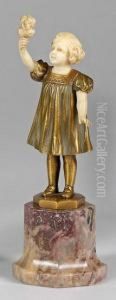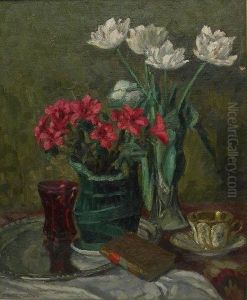Johann Philipp Preiss Paintings
Johann Philipp Ferdinand Preiss was a German sculptor who is known for his Art Deco figurines, particularly those depicting children, athletes, and dancers. Born on February 13, 1882, in Erbach im Odenwald, Germany, Preiss began his artistic journey at an early age, influenced by the rich artistic tradition prevalent in the region. His parents recognized his talent and encouraged him to pursue his passion for art.
Preiss received his initial training from an ivory carver in Erbach, which was well-known for its ivory carving industry. At the age of 15, he traveled to France and Italy to further his studies, honing his skills and absorbing the influences of classical art and the burgeoning Art Nouveau movement. Upon his return to Germany, Preiss settled in Berlin and began to establish himself as a sculptor.
In 1902, Preiss partnered with another renowned German sculptor, Arthur Kassler, to form the company Preiss & Kassler, operating out of Berlin. The firm became known for its small, intricately carved ivory figures, often clad in bronze and used as decorative pieces. Preiss's work was characterized by a high degree of detail and an elegant sense of motion, elements that made his figures highly sought after.
During the 1920s and 1930s, Preiss’s work epitomized the Art Deco style, and he became one of the era's leading sculptors. His pieces were primarily cast in bronze and then carved with ivory, utilizing a technique known as chryselephantine. The elegant and stylish figures Preiss created were emblematic of the era's aesthetic, with sleek lines, dynamic poses, and a glossy finish.
Unfortunately, Preiss's life and career were cut short by the turmoil of World War II. He died on July 29, 1943, in Berlin. Despite his untimely death, Preiss left behind a legacy as one of the foremost figures of Art Deco sculpture, and his works continue to be highly prized by collectors and art enthusiasts around the world.

